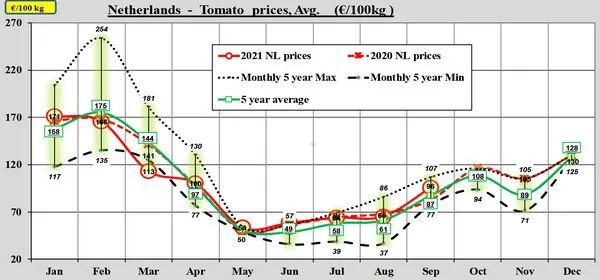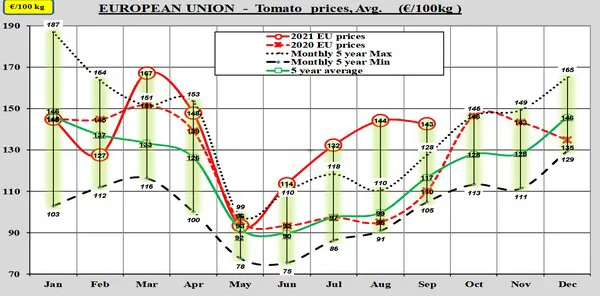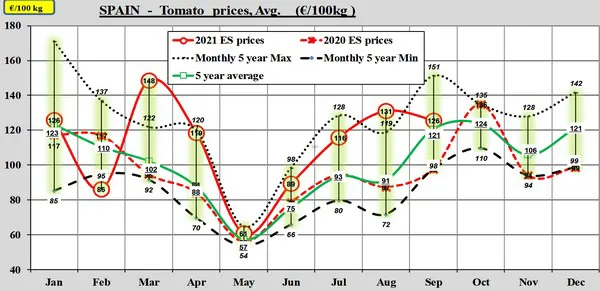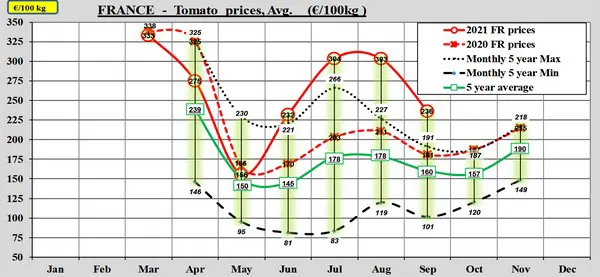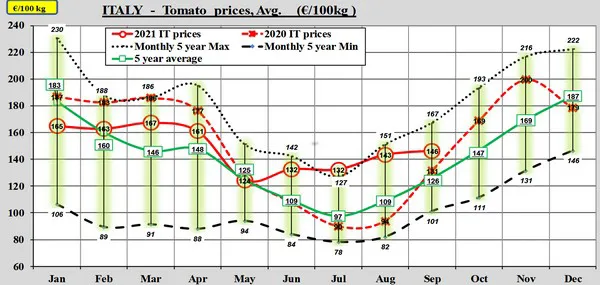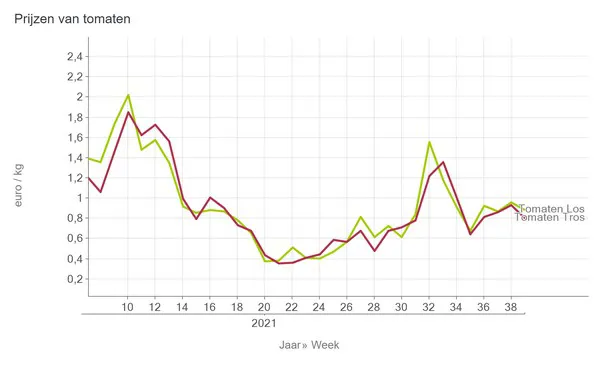The Netherlands lagged slightly behind other European countries in the 'tomato craze' in June, July, and August, but they made up for that in September, as the European Commission's tomato dashboard's latest figures.
In the Netherlands, tomato prices kept rising in September, even though the summer months were already over. In September, prices averaged around €0.96/kg, 5% percent higher than it normally is in August and September. In July and August, margins in the Netherlands remained low compared to high prices in the rest of Europe. In recent years, Dutch prices usually rose in July and August, but this year, that happened in September.
In the Netherlands, tomato prices often climb in October, too, as supplies fall. After that, prices usually decline once productions from Northern and Southern Europe collide. However, the tomato dashboard's trend may deviate again given the ongoing virus problem and the energy crisis.
A break in the trend
In Europe, tomato prices did not rise in September across the board, contrary to the trend in recent years. Normally, they increase by 17% from August to September, but this year the average price dropped by 1% to € 1.43/kg.
Prices in Spain deviated the most. In the past five years, prices rose by an average of 32% from August to September, but this year they fell by 4%.
In France, too, the price decreased by 22%, which is more than the past five years' 10% average. In Italy, prices did rise by 2% from August to September, but that is significantly less than the 16% average increase of the past five years.
Belgium is not included in the European Tomato Dashboard, but the Belgian Horticultural Auctions Federation (VBT) keeps its own records. A graph shows that prices peaked at the beginning of August, but that that peak had disappeared by week 35, though prices remained higher than in the same period last year.
The VBT also gives an overview of tomato supplies which shows considerable weekly differences. In September, the supply was markedly lower, particularly in weeks 35 and 36, than the year before for both loose and truss tomatoes. After that, in week 37, prices rose a little higher than they were in 2020, but they dropped again in weeks 38 and 39.

